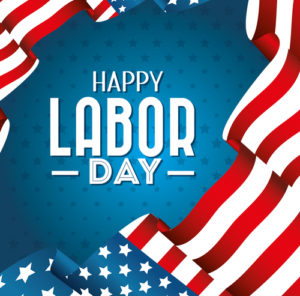- Labor Day is celebrated on the first Monday in September every year.
- Many people consider Labor Day to signal the end of summer, but the official end of summer doesn’t come until September 21.
- There are 160 million workers in the United States as of July 2017.
- According to AAA, every Labor Day, approximately 35 million people travel at least 50 miles, to outdoor activities, barbecues, or just going on a family vacation.
- The average Labor Day traveler will go 594 miles from home, with 8% flying and 85% driving.
- What kinds of activities will people do on Labor Day? 57% enjoy barbecues and dining out, 46% visit with friends and relatives, and 43% hit the malls and stores fo Labor Day shopping!
- Paying a visit to our beautiful national parks is popular on Labor Day, with over 30,000,000 people visiting national parks every year and the majority of them on Labor Day weekend.
- However, our fun Labor Day holiday grew out of some very dire and dark circumstances in the U.S workplace.
- In the late 1800s, labor conditions were horrid. Wealthy families and industrialists controlled everything – including the politicians, who were in their pockets and the average working class person was destitute.
- The idea of labor rights and a national day for labor causes may have been first spread by Matthew Maguire, a machinist with the Central Labor Union of New York, while others attribute it to Peter Mcguire of the American Federation of Labor in 1882.
- But we can also look at the Pullman Town labor camp in 1890s Chicago to see the spark that lit the modern Labor Day movement.
- George Pullman, one of the wealthiest men in America, owned the Pullman Railroad Car Company, setting up an oppressive feudal system where his workers were subjects, and he was king.
- His workers were forced to live in a settlement where Pullman owned everything including apartments and rooming houses, food markets, stores, and even the churches and the libraries.
- When the Pullman Railroad Car Company cut all worker wages by 25% during the depression of 1893, the Pullman workers finally had enough, walking off of their jobs and going on strike on May 11, 1894.
- To show support and fight for worker rights across the nation, the American Railway Union ordered a full-scale boycott. When 125,000 railroad workers across 27 states joined the strike, all rail travel in the country came to a standstill.
- To try and break the strike and get the railroads running again, President Grover Cleveland sent troops and U.S. Marshalls to Chicago.
- It all exploded on May 4, 1886, when workers gathered in Chicago’s Haymarket Square when peaceful protestors were met by federal troops and a huge riot ensued. Within only a few minutes, eight people had been killed and over 120 police and civilians injured – most of them victims of police vigilantism.
- Eventually, the strike was broken, but President Cleveland designated a new federal holiday, Labor Day, to promote worker rights and prevent more strikes, riots, and industry shutdowns.
- The first Labor Day holiday was celebrated on Tuesday, September 5, 1882, in New York City in Union Square. It was sponsored by Matthew McGuire’s Central Labor Union.
- The decision to make Labor Day the first Monday of September was approved on June 28, 1894.
- The Adamson Act was passed on September 3 1916, to establish an eight-hour work day.
- But American workers do plenty of traveling on a daily basis – to and from work. In fact, the average U.S. employee commutes to and from work 25.4 minutes every working day.
- When it comes to workers’ rights, women are still fighting for equality. Today, women make up:
- 46% of the labor force
- 36% of all MBA students
- 32% of lawyers
- 17% of Congress
- Have you heard about the funny fashion rule that you can’t wear white after Labor Day? It came from a practice among America’s upper class and elite 100 years ago, who would return from their summer vacations after Labor Day weekend and pack away their white clothing for the winter.
- Oregon was the first state to honor Labor Day as a legal holiday in 1887.
- Every year, New York City throws a big Labor Day parade, which follows the same 20-block route as the original 1882 labor march.
- Labor Day is a big hot dog holiday, along with Memorial Day and the 4th of July. In fact, Americans eat about 7 billion hot dogs every summer, which comes to 818 hot dogs every summer!
- In many other countries, May 1 – also called May Day – is the holiday to commemorate working people.
- While they may get Labor Day off, U.S. workers do a lot more labor than anyone in the world. In fact, the average working adult in America puts in 1,790 hours per year – more than any other nation.
- If you think that’s too many hours, consider that in the 19th century before workers’ rights spread, the average work day was 12 hours, 7 days a week. That’s not just for adults, but the majority of teenagers had to work, and sometimes, children as young as 5 labored in factories!
Thank goodness we have Labor Day! Now go out and be safe, have fun, and celebrate the true spirit of the holiday!


Comments are closed.